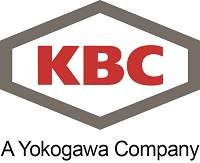KBC (A Yokogawa Company) has released its Value Chain Optimization Manifesto to help asset owners and operators in the Energy and Chemicals industry drive top-line revenue growth, at significantly less cost. Few companies have been able to align all aspects of their business model to extract maximum value from their asset and supply chain optimization activities. The manifesto provides a blueprint for the agile optimization of fluids, feedstocks and other inputs with products and operations to reflect market demand and prices.
Oil and gas dominate the COVID-19 lost revenue projections with over $1.8 trillion lost in 2020, according to recent research by Fitch Ratings1. The Energy and Chemicals industry as a whole has experienced a major contraction in free cash flows. This has driven a big focus on lowering costs, optimizing existing production at lower throughput / flow rates, and deferment of maintenance on uneconomic production. Companies are being forced to adjust their portfolios and operating models; digitalizing deeper and faster to improve economics of marginal assets.
The manifesto outlines how value chain optimization can be applied wisely, demystifies the jargon, describes practical solutions and demonstrates value. It is based on deep hands-on experience, alongside KBC’s parent Yokogawa, working with the world’s largest and most complex companies in the Energy and Chemical industry. The manifesto focuses on upstream oil and gas, liquefied natural gas (LNG), oil refining, petrochemicals and power utilities sectors, and showcases how certain assets can achieve in excess of $600 million incremental profitability.
“Value chain optimization is the key to driving more revenue, at less cost, with higher capital efficiency and reinforced licence to operate,” comments Duncan Micklem, Executive Vice President at KBC.
“Many businesses struggle with operating plan execution and efficiently linking operating plans to production schedules. The Value Chain Optimization Manifesto outlines how to solve for this at scale.”

